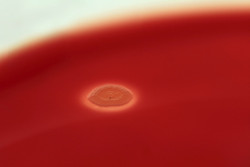Gene tinkering reverses drug resistance
Antibiotic resistance constitutes a new medical challenge that often prohibits good therapeutic outcome. The design of new antibiotics has proven more difficult than initially envisaged and novel solutions are urgently required. Scientists of the EU-funded 'Rendering environmental pathogens sensitive to antibiotics prior to infection' (RESTORING SENSITIVIT) project proposed the use of genetically engineered bacterial viruses (bacteriophages) to confer antibiotic sensitivity. Considering that most antibiotic-resistant bacterial strains emerge from mutations in target proteins, reintroduction of the wild-type forms of these proteins through bacteriophages should sensitise bacteria to antibiotics. Two of these genes, rspL and gyrA, responsible for sensitivity to streptomycin and quinolones, were successfully used to confer multiple drug sensitivity in the pathogens. Additionally, the consortium exploited RNAi technology to generate bacteriophages that upon infection silenced the expression of antibiotic resistance genes in bacteria. The major challenge faced by the RESTORING SENSITIVIT researchers was to select for the genetically manipulated bacteria. To achieve this, they introduced the tellurite resistance gene alongside their drug sensitivity cassette. Subsequent application of the drug tellurite enriched antibiotic-sensitive pathogens in nosocomial infections. To counteract the great selective pressure imposed by antibiotics, the scientific team introduced an alternative backup system. They took advantage of a natural bacterial system for maintaining extrachromosomal elements, the toxin-antitoxin system. Incorporation of this system enhanced the effectiveness of the engineered bacteriophages as the pathogens maintained the phage-introduced DNA construct to survive. RESTORING SENSITIVIT combined these features to generate one construct with sensitising DNA elements, ex vivo selection markers and a plasmid maintenance system. Exploiting the inherent capacity of bacteriophages to infect bacteria along with genetic engineering constitutes a novel approach to resolve antibiotic-resistant bacteria.
Keywords
Antibiotic resistance, bacteriophage, RNAi, tellurite, DNA construct, plasmid, genetic engineering

